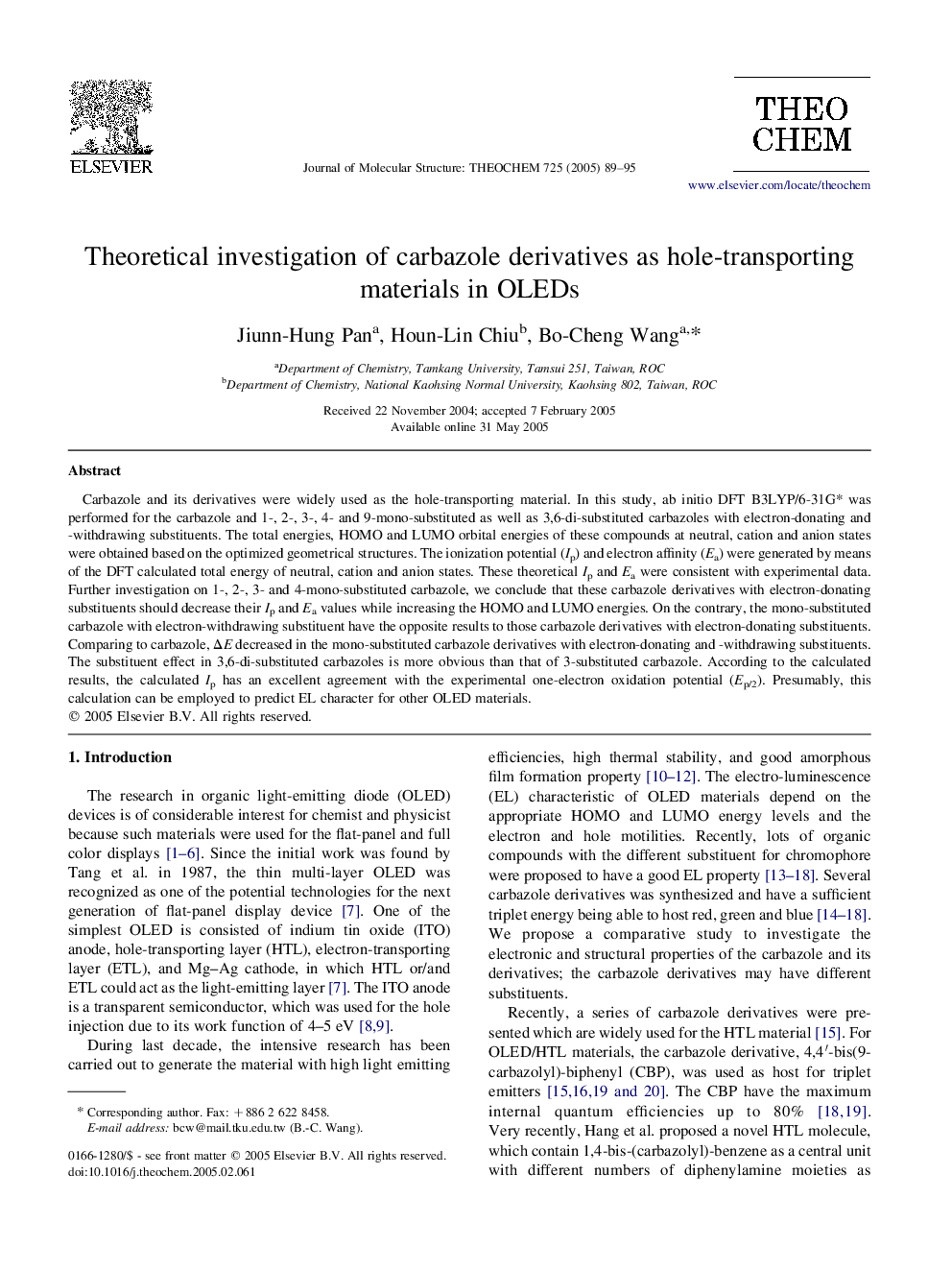| Article ID | Journal | Published Year | Pages | File Type |
|---|---|---|---|---|
| 9591208 | Journal of Molecular Structure: THEOCHEM | 2005 | 7 Pages |
Abstract
Carbazole and its derivatives were widely used as the hole-transporting material. In this study, ab initio DFT B3LYP/6-31G* was performed for the carbazole and 1-, 2-, 3-, 4- and 9-mono-substituted as well as 3,6-di-substituted carbazoles with electron-donating and -withdrawing substituents. The total energies, HOMO and LUMO orbital energies of these compounds at neutral, cation and anion states were obtained based on the optimized geometrical structures. The ionization potential (Ip) and electron affinity (Ea) were generated by means of the DFT calculated total energy of neutral, cation and anion states. These theoretical Ip and Ea were consistent with experimental data. Further investigation on 1-, 2-, 3- and 4-mono-substituted carbazole, we conclude that these carbazole derivatives with electron-donating substituents should decrease their Ip and Ea values while increasing the HOMO and LUMO energies. On the contrary, the mono-substituted carbazole with electron-withdrawing substituent have the opposite results to those carbazole derivatives with electron-donating substituents. Comparing to carbazole, ÎE decreased in the mono-substituted carbazole derivatives with electron-donating and -withdrawing substituents. The substituent effect in 3,6-di-substituted carbazoles is more obvious than that of 3-substituted carbazole. According to the calculated results, the calculated Ip has an excellent agreement with the experimental one-electron oxidation potential (Ep/2). Presumably, this calculation can be employed to predict EL character for other OLED materials.
Related Topics
Physical Sciences and Engineering
Chemistry
Physical and Theoretical Chemistry
Authors
Jiunn-Hung Pan, Houn-Lin Chiu, Bo-Cheng Wang,
